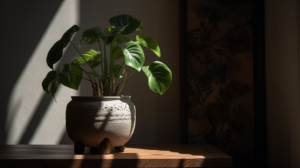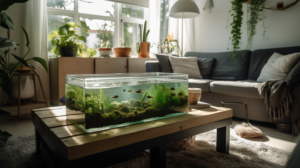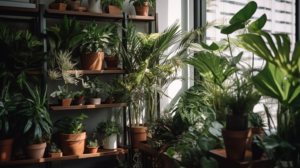The Ultimate Guide to Indoor Garden Fertilization
Unlock the Secret to a Thriving Indoor Garden
Indoor garden fertilization is a crucial aspect of maintaining a thriving and healthy indoor garden. However, it can be confusing for beginners to navigate the world of fertilizers. In this guide, we’ll walk you through the essentials of indoor garden fertilizer, answering your questions about types, frequency, and quantity, and providing tips for proper fertilization. Additionally, we’ll recommend some popular fertilizers for indoor gardening to help you make the right choice for your plants.
Types of Fertilizers for Indoor Gardens
There are several types of indoor garden fertilizers, including:
- Granular Fertilizers: These slow-release fertilizers are available in both organic and synthetic forms. They’re applied to the soil and release nutrients gradually over time.
- Water-soluble Fertilizers: These fast-acting fertilizers dissolve in water and are applied to the soil or as a foliar spray. They’re typically used for quick nutrient boosts and are available in both organic and synthetic forms.
- Organic Fertilizers: Made from natural sources, such as compost, worm castings, or fish emulsion, these fertilizers provide essential nutrients and improve soil structure. They can be granular or liquid-based.
Indoor Garden Fertilization Frequency
As a general rule, you should fertilize your indoor plants every 4-6 weeks during the growing season (spring and summer) and reduce the frequency during the dormant period (fall and winter). However, some plants, like indoor herbs, may require more frequent fertilization to support their rapid growth. Always follow the specific fertilizer instructions and plant requirements to avoid over-fertilization, which can harm your plants.
How Much Fertilizer Should You Use?
The amount of fertilizer you should use depends on the type of fertilizer and the specific needs of your plants. Always follow the label instructions and start with a lower dosage, gradually increasing it as needed. Over-fertilizing can lead to a buildup of salts in the soil, which can damage your plants’ roots and inhibit their growth.
Tips to Ensure Proper Indoor Garden Fertilization
- Choose the Right Fertilizer: Select a fertilizer that’s appropriate for your specific indoor plants. Look for balanced formulations or ones designed for the particular needs of your plants, such as fertilizer for indoor herbs.
- Monitor Your Plants: Keep an eye on your plants’ growth and health. Signs of nutrient deficiency include yellowing leaves, stunted growth, and weak stems. Adjust your fertilization routine as needed to address any issues.
- Water Before Fertilizing: Ensure your plants are well-hydrated before applying fertilizer to prevent root burn.
- Flush the Soil Periodically: Occasionally, flush the soil with water to remove any salt buildup from fertilizers.
Recommended Indoor Garden Fertilizers
Here are some popular fertilizers for indoor gardening:
- Miracle-Gro Indoor Plant Food: This water-soluble fertilizer is specially formulated for indoor plants and provides essential nutrients for strong growth and vibrant foliage.
- Organic Espoma Indoor Liquid Plant Food: This organic liquid fertilizer is perfect for all types of indoor plants, including herbs, and promotes overall plant health and growth.
- Osmocote Smart-Release Plant Food: This slow-release granular fertilizer provides continuous nutrients for up to 6 months, making it an excellent choice for busy gardeners.
- FoxFarm Big Bloom Liquid Plant Food: This organic liquid fertilizer is designed to promote flowering in indoor plants and improve overall plant health.
- Neptune’s Harvest Fish & Seaweed Fertilizer: This organic liquid fertilizer combines fish emulsion and seaweed extract, providing a rich source of nutrients for indoor plants.
By understanding the basics of indoor garden fertilization and implementing a proper fertilization routine, you’ll set your indoor garden up for success, creating a lush and thriving environment that enhances your living space and well-being.
Indoor Garden Fertilization FAQs
1. Can I use outdoor garden fertilizer for my indoor plants?
While it’s possible to use outdoor garden fertilizer for indoor plants, it’s best to choose a fertilizer specifically designed for indoor gardening. Indoor garden fertilizers are formulated to provide the right balance of nutrients for plants grown in containers and indoor conditions.
2. How can I tell if my indoor plants need more fertilizer?
Signs of nutrient deficiency in your indoor plants include yellowing leaves, stunted growth, weak stems, and poor flowering or fruiting. If you notice these symptoms, you may need to adjust your fertilization routine or switch to a more appropriate fertilizer for your plants.
3. Can I over-fertilize my indoor plants?
Yes, over-fertilization can harm your plants by causing a buildup of salts in the soil, which can damage plant roots and inhibit growth. Always follow the label instructions and start with a lower dosage, gradually increasing it as needed.
4. What's the best fertilizer for indoor herbs?
The best fertilizer for indoor herbs is one that provides a balanced mix of nutrients and promotes healthy, lush growth. Organic liquid fertilizers, such as Espoma Indoor Liquid Plant Food or Neptune’s Harvest Fish & Seaweed Fertilizer, are excellent choices for indoor herbs.
5. Should I fertilize my indoor plants during the winter?
During the winter months, when most indoor plants enter a dormant phase, it’s best to reduce the frequency of fertilization or stop it altogether. Resume your regular fertilization schedule once you notice new growth in the spring.
Related Articles


